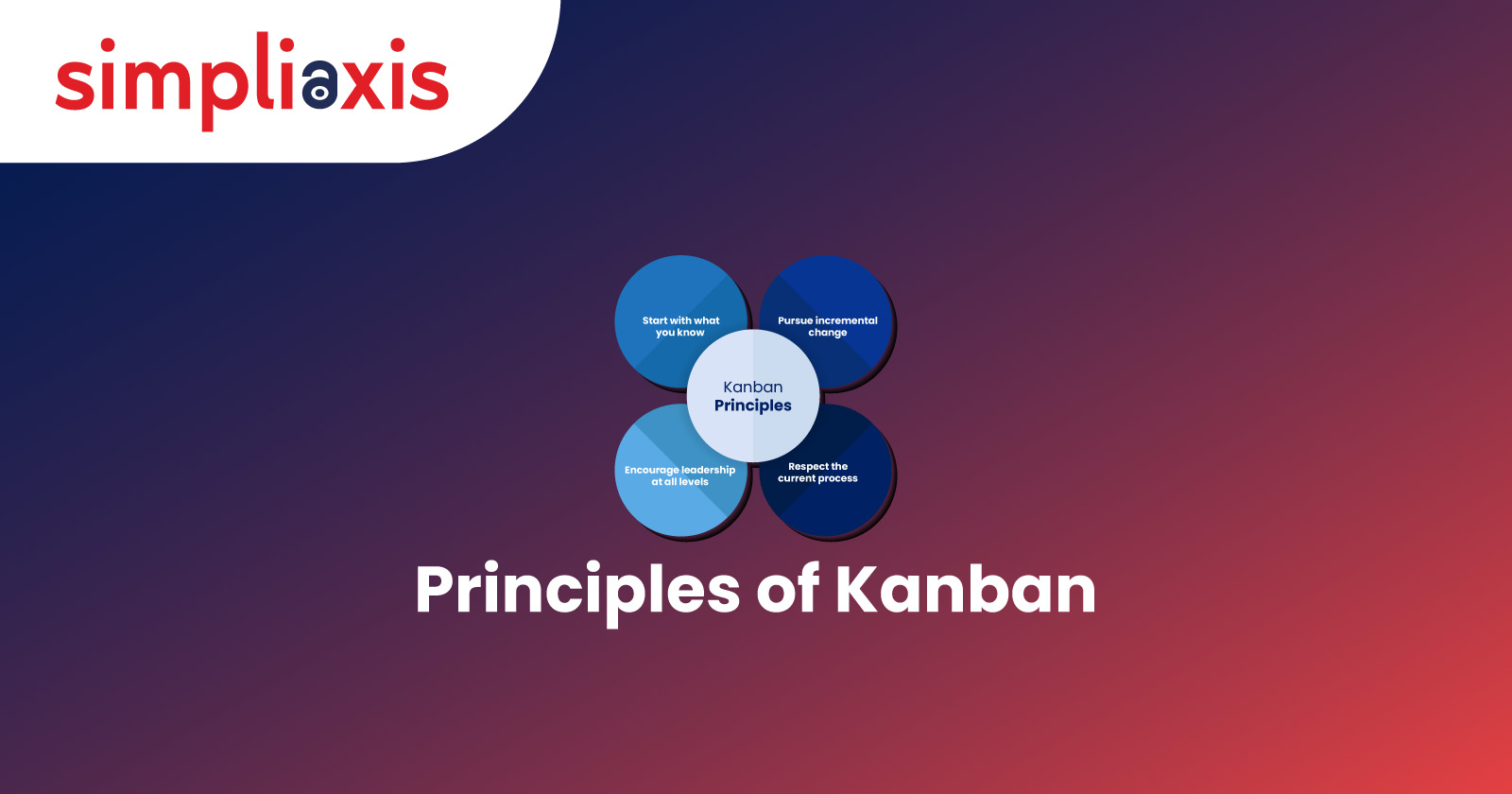Kanban has been in use for decades now. But over some time, many changes have taken place. Compared to when it was initially introduced in the 1940s, Kanban principles and values have changed quite a lot to suit the current digital age. The technological advances made over the years have changed the face of the industry, and accordingly, Kanban has also evolved. It means its earlier methodology of just-in-time and pulls systems has gone beyond manufacturing and has encompassed the industry as a whole. Earlier markets have changed, and new markets have developed in this era that works primarily with software.
Organizations are now focusing on empowering their human resources by providing them with tools and working conditions to enhance their productivity. Therefore, Kanban has also changed to cover a broader spectrum of industries, organizations, and technologies. The core principles of Kanban have been reshaped to fit into the current environment. The Kanban method principles now cover a whole gamut of industries and functions apart from manufacturing. The principles of Kanban now influence service industries along with functions like sales, marketing, customer care, etc. We will be discussing the Kanban principles and values in this article. But before that, let us briefly understand what Kanban is.
What is Kanban?
The word Kanban is a Japanese word that means "visual card." So, Kanban is a visual method of managing your work. Kanban visualizes your work and gives you a general understanding of what you are doing. The rules you follow to do this work, how much you achieve in a specific time frame, and the evaluation of your results are all part of this understanding. Kanban applies board methodology, which means teams display cards on a board that makes it easy for them to visualize and show the flow of work to all concerned in the team. This way, the teams can easily view the interruptions in the flow of work and can get together to work on a solution before the situation goes out of hand. This is the chief benefit of Kanban.
Having understood Kanban, let us now move on to Kanban principles and values.
Principles of Kanban
There are four change management principles and three service delivery principles of Kanban. We will have a look at each one of them.
The four change management principles are:
1. Understanding:
Before applying Kanban to the current processes, you must thoroughly understand how the existing processes work. This is called 'start with the current process' or 'start with what you do now.' Kanban is supposed to improve the process and not replace it. Understanding also involves understanding the overall organizational behavior and how the people in the organization would respond to the change. All the aspects of the organization are considered, like roles and responsibilities of people and their positions, workflow, mutual communication, etc. The more understanding of these aspects you have, the easier it would be for you to implement change and justify the cost of implementation. In addition, when these facts are presented, the people involved have less resistance to change.
2. Agreement on following the improvement through transformative changes:
This is a crucial Kanban principle in Agile and Scrum too. The idea in all these is to deliver continuous development through small, incremental changes. Kanban understands it is hard to bring about significant changes without bringing all stakeholders into a common agreement. People who would be affected by the proposed change will have their reasons for resistance. Some may feel it might slow down their progress, and management may have concerns about the cost-effectiveness of the change. So, all stakeholders must be on the same page to implement change effectively. It happens that sometimes people in the organization agree that there is a problem in the workflow but do not agree on the solution to remove the impediment in the process. So, we can see the importance of implementing the changes through agreement.
3. Respect the current processes and people:
This principle emphasizes that Kanban does not interrupt the existing processes and operations. The existing processes and people working in the organization must be respected for what they have done over time. They may have some issues, but they have been established over time and contributed to whatever the organization has achieved. When you respect the people in your organization, you earn their willingness to adapt to the proposed change, and hence you have to encounter less resistance. The purpose is to get acceptance for Kanban. This is particularly critical for larger organizations because implementing a change in larger organizations is always tricky and slow to implement.
4. Encourage leadership at all levels:
While Kanban understands that collaboration is a potent tool for resolving issues, at the same time, it also encourages anyone willing to take ownership of a problem and work toward its solution. Kanban clearly develops, encourages, and supports leadership at all organizational levels. It also calls for supporting initiatives at every level. This encourages teams as well as individuals to self-organize. A piece of good advice for good leaders is to challenge and to be ready to be challenged. Under these circumstances, implementing a change would be easier and more successful.
Transitioning from Change Management to Service Delivery Principles in Kanban
1. The focus should be on the needs and expectations of the customer.
It is essential to understand what the customers need from you. What do they expect to be delivered to them? So, your focus should be on these things. It is your primary responsibility to deliver value to your customers. Everything revolves around this. If your customers are unhappy, let their dissatisfaction work as a promotor for you to have a relook with the processes associated with the product or service you have delivered and work toward improving them. You must constantly interact with your customers to understand their criteria for judging how much value you have delivered, irrespective of whether they are happy or unhappy with you. Your Kanban system must include these criteria to meet your customer's expectations.
2. Manage the work
An essential part of managing the work is allowing people to self-organize. And for this, you must empower the people. Services are intangible, meaning they are in a non-physical form. They are generally in the form of a supply of information, support, or both. Earlier, services were primarily managed by workers within the working time. And this was not measurable. Like physical products, the work in progress (WIP) was not considered. The problem is that you can't determine the exact time for delivering some information. Here, the problem can be reduced when the process becomes visible using the Kanban board. You can easily visualize the process, set your employees' goals, and monitor their progress. This results in better management of the work. So, each service employee must explicitly explain the customers' needs and expectations to deliver quality services efficiently.
3. Develop policies to obtain better results for customers and business
Make policies and rules that provide better customer and business results. Design guidelines and provide them to your employees for a better understanding of what they are expected to do. These guidelines should be easy to understand. They will know what they should change. This will keep the workflow smooth and minimize the obstacles.
Moreover, there will be more likelihood of reaching a common agreement in dispute cases. Continuously evaluate your approach and rules and strike out or change the rules which are no longer relevant. Make the culture in your organization focused on customers.
These are the principles of Kanban. We have discussed Kanban principles and values in detail and are sure you will benefit from it. Kanban is a very effective and efficient tool to manage your work, have a clear view of what is happening, and keep the disruptions to the minimum to achieve a smooth workflow.
Also, Check: Kanban Tool
Conclusion:
In conclusion, understanding and implementing the principles of Kanban are essential for modern businesses to adapt to the ever-evolving industry landscape. As Kanban has evolved from its manufacturing origins to encompass various sectors, including service industries, mastering its principles has become paramount. By respecting existing processes, fostering leadership at all levels, and transitioning to service delivery principles, organizations can achieve smoother workflows and deliver greater value to their customers.
Simpliaxis offers comprehensive training programs, including Kanban System Design (KMP I) Certification Training, to equip professionals with the knowledge and skills needed to implement Kanban effectively. With Simpliaxis, organizations can empower their teams to optimize workflows, minimize disruptions, and drive continuous improvement through the principles of Kanban.



















